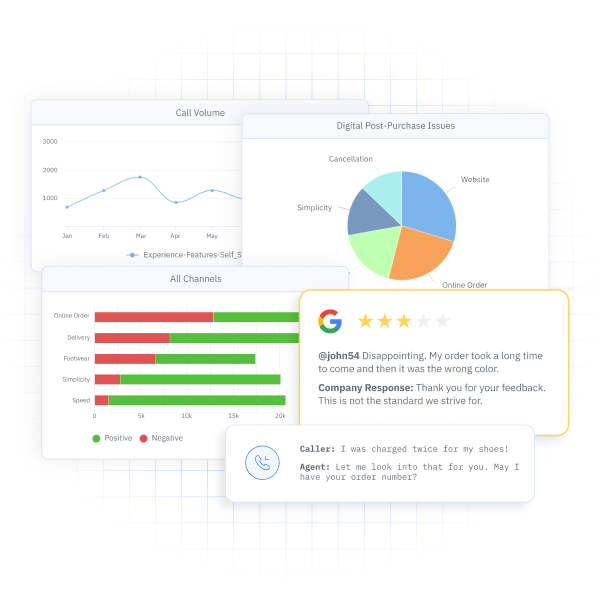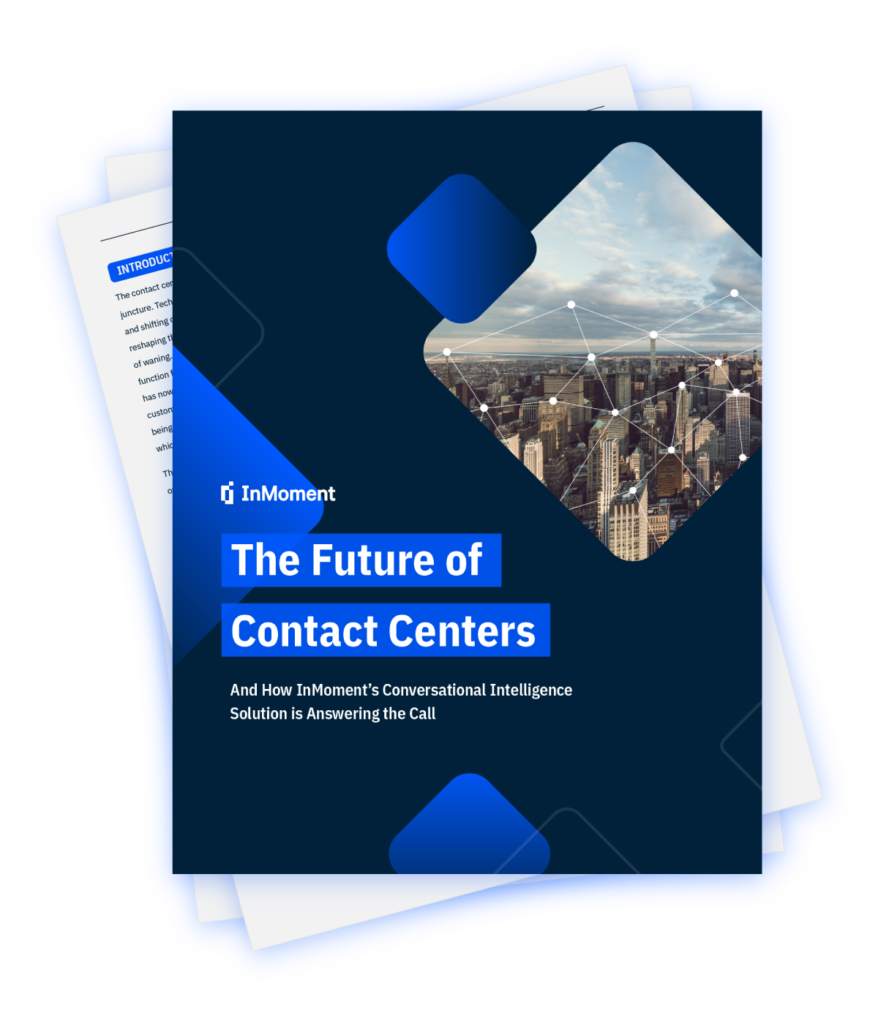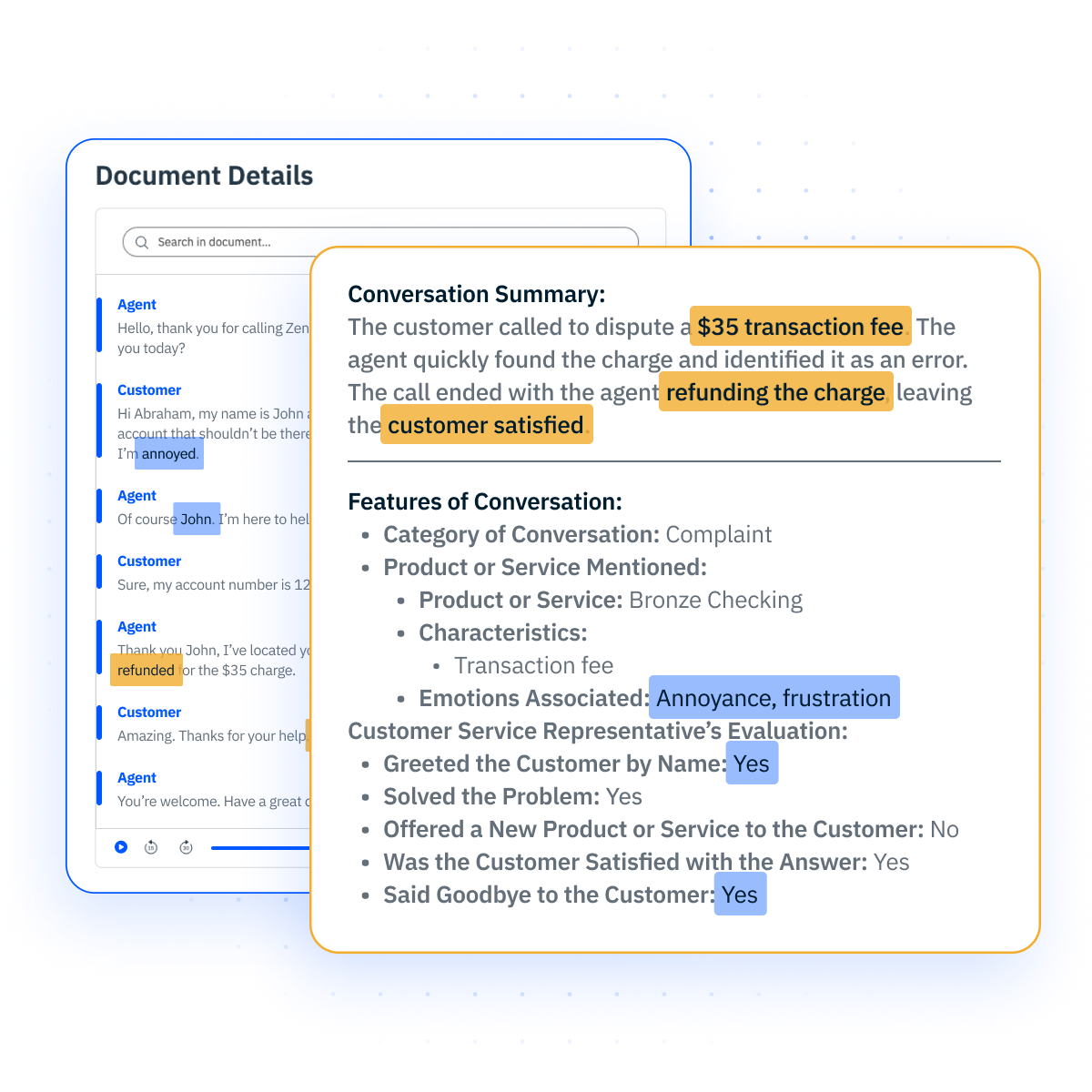Contact Center Experience: 10 Best Practices, Tools, and Features to Look For
The contact center is often the frontline of customer interaction, making it a critical touchpoint for brand perception. A positive experience can enhance customer loyalty, while a poor one may drive customers away. Efficient, empathetic service helps resolve issues quickly, fostering trust and long-term relationships.
Your contact center is more than a support function—it’s often the first real conversation a customer has with your brand. And that conversation matters.
When customers reach out, they’re usually not at their best. They’re confused, frustrated, or in need of urgent help. This is your moment to show them who you really are. How you respond shapes not only their immediate satisfaction, but their long-term loyalty and likelihood to return.
What Is a Contact Center Experience?
The contact center experience is the sum of every interaction a customer has with your support team—across every channel, from voice and email to chat, social, and messaging apps. But it’s not just about solving problems; it’s about how those problems are solved.
Do customers feel heard? Are their issues resolved quickly? Are they being bounced from channel to channel, or getting a smooth, connected experience?
That’s the difference between a basic support interaction—and a great contact center experience.
Modern contact centers are no longer just call centers. They’re omnichannel experience hubs powered by data, automation, and real-time feedback.
Why is the Contact Center Experience Important?
A poor experience—long wait times, impersonal responses, being bounced between agents—can damage the relationship beyond repair. On the flip side, a smooth, empathetic, and efficient interaction can turn a bad moment into a brand-defining one.
Here’s what’s at stake:
- Poor contact center experiences are the #1 reason customers churn
(Zendesk CX Trends Report, 2023) - Over half of customers say they’ll switch to a competitor after just one bad interaction
(PwC, Future of Customer Experience Survey, 2018) - 70% of customers expect connected processes and seamless transitions between departments or channels
(Salesforce, State of the Connected Customer Report, 2023)
10 Best Practices for the Contact Center Experience
The metrics you track to measure your contact center experience will vary depending on your industry. That being said, there are some best practices to ensure you follow that will help create the environment needed for a smooth contact center experience.
1. Implement Omnichannel Integration
Customers interact with brands through multiple channels. Ensuring a consistent and connected experience across all platforms—phone, email, chat, social media—is vital. An integrated omnichannel approach allows agents to have a unified view of customer interactions, enabling personalized and efficient support. This not only enhances customer satisfaction but also streamlines operations.

2. Invest in the Right CX Tool
Equipping your contact center with the right tools is essential for delivering exceptional customer experiences. Key tools include:
- Customer Relationship Management (CRM) Systems: Centralize customer data for personalized interactions.
- Chatbots and Virtual Assistants: Handle routine inquiries, freeing up agents for complex issues.
- Call Recording and Quality Management: Monitor and improve agent performance.
- Workforce Optimization Platforms: Ensure efficient staffing and scheduling.
- Conversational Intelligence Platforms: Break down conversations into customer and agent sections, providing targeted insights into customer sentiment and agent performance.
3. Offer Efficient Issue Resolution with AI + NLP
Artificial Intelligence (AI) and Natural Language Processing (NLP) can significantly enhance self-service options. AI-powered smart summaries can save agents up to 33% of their time by eliminating the need for manual call notes. Combining AI with NLP ensures that self-service tools understand and respond to customer inquiries accurately, reducing the risk of AI hallucinations (incorrect or misleading results that AI models) and enhancing the overall customer experience.
4. Foster a Positive Work Environment
Employee satisfaction directly impacts customer satisfaction. A positive work environment that includes recognition, manageable workloads, and a supportive culture boosts agent morale. Engaged and happy agents are more likely to provide exceptional service, leading to improved customer experiences.
5. Personalize Every Customer Interaction
Personalization is key to building strong customer relationships. Utilizing customer data and context allows agents to tailor conversations, making interactions more relevant and human. Personalized experiences demonstrate that the company values the customer, fostering loyalty and satisfaction.
6. Collect and Act on Customer Feedback
Gathering feedback through surveys, sentiment analysis, and direct input provides valuable insights into customer needs and expectations. Acting on this feedback to improve processes and services shows customers that their opinions matter, enhancing trust and loyalty.
7. Prioritize Agent Training and Coaching
Continuous training and coaching are essential for maintaining high performance. Focusing on soft skills and scenario-based training, particularly aimed at improving First Contact Resolution (FCR), can significantly reduce call volumes and enhance customer satisfaction.
8. Track the Right Contact Center KPIs
Monitoring key performance indicators (KPIs) helps assess the effectiveness of your contact center. Important KPIs include.
- First Contact Resolution (FCR): Measures the percentage of issues resolved on the first interaction
- Customer Satisfaction Score (CSAT): Assesses customer satisfaction with a specific interaction.
- Average Handle Time (AHT): Tracks the average duration of customer interactions.
- Net Promoter Score (NPS): Evaluates customer loyalty and likelihood to recommend.
These contact center metrics provide insights into areas of strength and opportunities for improvement.
9. Reduce Hold Times with Intelligent Routing
Intelligent call routing systems connect customers to the most qualified agents quickly, reducing hold times and improving issue resolution efficiency. By analyzing customer data and agent expertise, these systems ensure that inquiries are handled promptly and accurately.
10. Continuously Optimize Through Contact Center Analytics
To keep your contact center running at its best, you need more than instinct—you need insight. Contact center analytics give you the data to uncover emerging trends, spot performance gaps, and make informed, proactive decisions. Regularly reviewing this data ensures your team adapts to evolving customer needs and delivers consistently excellent service.
Features to Look For in Contact Center Experience Software
While employee training and contact center optimization are important to improve the contact center experience, you will also find that the right contact center software will help you improve the performance of your contact center and business performance. Here are some key features to look for in contact center experience software:
Conversation Intelligence
Conversation intelligence is crucial for contact centers handling large volumes of customer inquiries. This technology analyzes and interprets customer interactions in real-time, providing valuable insights into customer sentiment, behavior, and emerging trends. By leveraging conversation intelligence, contact centers can identify common issues and frequently asked questions, enabling them to address these proactively and improve overall efficiency.
Conversational intelligence tools analyze customer interactions to extract valuable insights. These tools help identify trends, customer sentiments, and areas for improvement, enabling proactive enhancements to the customer experience.
Artificial Intelligence
AI-powered features like sentiment analysis, call summarization, and predictive analytics streamline interactions and improve efficiency. These tools enhance decision-making and personalize customer experiences.
Agent & Manager Dashboards
Employee dashboards will help improve the contact center experience by providing real-time visibility into key performance metrics and operational data. For agents, dashboards can display important information such as call volume, average handle time, customer satisfaction scores, and personalized performance goals. This transparency empowers agents to monitor their performance, identify areas for improvement, and stay motivated to meet targets.
For managers, dashboards offer a comprehensive view of the entire contact center’s performance, including agent activity, queue status, and service level adherence. This enables managers to make informed decisions, allocate resources efficiently, and provide targeted coaching and support to agents. By leveraging these dashboards, agents, and managers can work collaboratively to enhance customer satisfaction and operational efficiency.

Analytics Capabilities
To create a great contact center experience, you need to be able to analyze all of the data coming through your contact center, regardless of the channel. Your contact center experience software must be equipped with predictive analytics, speech analytics, text analytics, and other analysis techniques. These different analytics serve different purposes.
- Predictive Analytics: Predictive analytics can forecast call volumes and customer inquiries, helping to optimize staffing and resource allocation. It can also identify emerging trends and potential issues before they become widespread.
- Speech analytics: Speech analytics analyzes voice interactions to gauge customer sentiment in real-time, helping agents adjust their approach during calls.
- Text Analytics: Text analysis software processes text-based interactions such as emails, chats, and social media messages to extract valuable insights such as the sentiment and intent behind written messages.
Integration Capabilities
If you create an omnichannel customer experience, your contact center software needs to integrate with your existing systems to make all data accessible. Ensure your chosen software can integrate with other essential business tools and platforms, such as CRM systems, e-commerce platforms, and marketing automation tools. This creates a seamless workflow and better data sharing across the organization.
Scalability and Flexibility
Your business will look very different one year from now. With that in mind, choose contact center experience software that will scale your business growth by handling increasing interactions without compromising performance. Also, make sure you have customizable features that allow you to tailor the software to your current business needs and give you the flexibility to update it if needed.
Improve Your Contact Center Experience with InMoment
Delivering exceptional contact center experiences requires a strategic approach, the right tools, and a commitment to continuous improvement. InMoment offers an integrated CX intelligence platform that combines surveys, reputation management, and conversational intelligence to provide comprehensive insights. By leveraging InMoment’s solutions, organizations can enhance customer satisfaction, improve operational efficiency, and drive long-term success.
Ready to transform your contact center experience? Request a demo today
References
Mckinsey & Company. The value of getting personalization right—or wrong—is multiplying. (https://www.mckinsey.com/capabilities/growth-marketing-and-sales/our-insights/the-value-of-getting-personalization-right-or-wrong-is-multiplying). Accessed 7/22/2024.
KPMG. Customer experience in the new reality. (https://assets.kpmg.com/content/dam/kpmg/be/pdf/2020/08/customer-experience-in-the-new-reality.pdf). Accessed 7/22/2024.
Comm100. Millennials Prefer Live Chat for Speed and Convenience. (https://www.comm100.com/resources/infographic/millennials-prefer-live-chat-speed-convenience/). Accessed 7/22/2024. Continuous training and coaching are essential for maintaining high performance.






